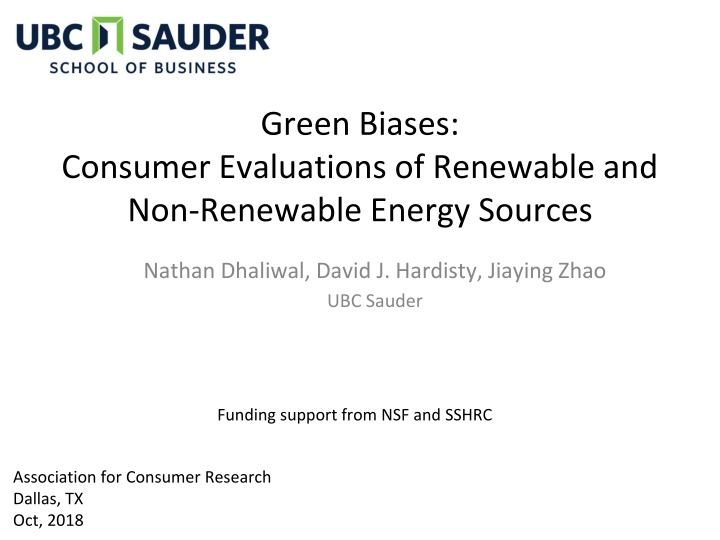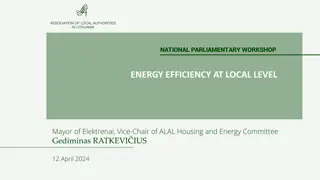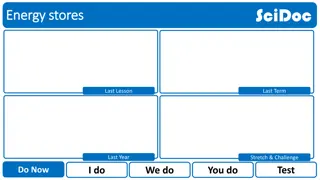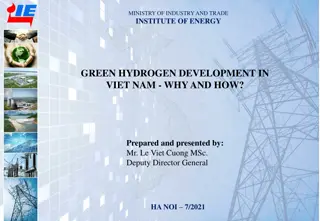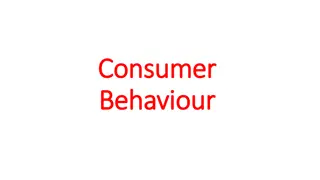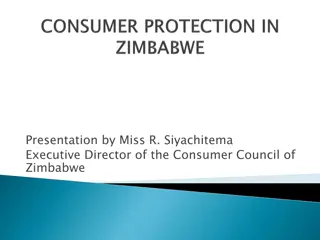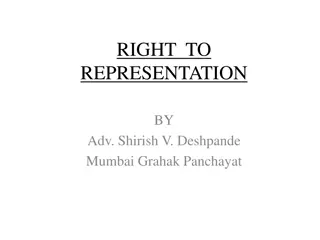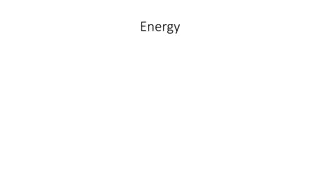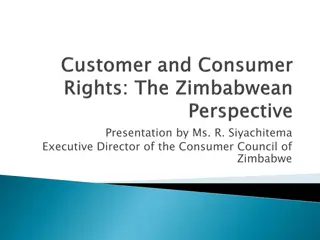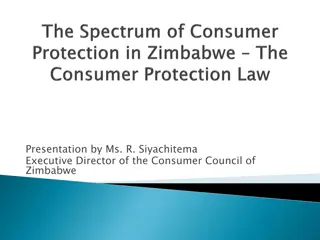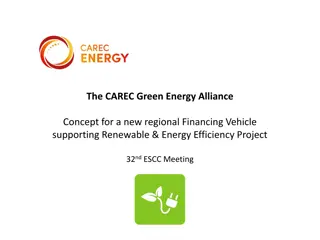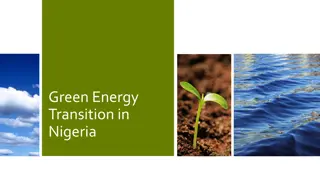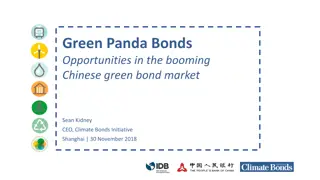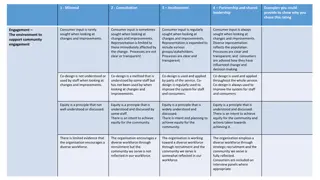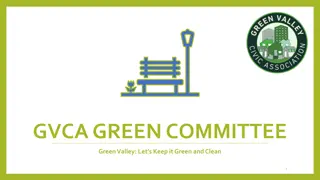Consumer Perceptions of Green vs. Brown Energy
This study examines consumer perceptions of renewable (green) versus non-renewable (brown) energy sources, investigating beliefs, biases, and evaluations. It delves into how individuals view the qualities and attributes of green and brown energy, exploring misconceptions and realities regarding costs, efficacy, and environmental impacts. The research aims to uncover differences in perceptions between green and brown energy, especially in single versus joint evaluations, shedding light on the psychological factors influencing choices in energy sources.
Download Presentation

Please find below an Image/Link to download the presentation.
The content on the website is provided AS IS for your information and personal use only. It may not be sold, licensed, or shared on other websites without obtaining consent from the author.If you encounter any issues during the download, it is possible that the publisher has removed the file from their server.
You are allowed to download the files provided on this website for personal or commercial use, subject to the condition that they are used lawfully. All files are the property of their respective owners.
The content on the website is provided AS IS for your information and personal use only. It may not be sold, licensed, or shared on other websites without obtaining consent from the author.
E N D
Presentation Transcript
Green Biases: Consumer Evaluations of Renewable and Non-Renewable Energy Sources Nathan Dhaliwal, David J. Hardisty, Jiaying Zhao UBC Sauder Funding support from NSF and SSHRC Association for Consumer Research Dallas, TX Oct, 2018
Green vs. Brown, The Facts In the United States, electricity contributes 28% of all greenhouse gas emissions (EPA, 2018 ). Consumers believe that green products are higher cost and lower in efficacy (Griskevicius, Tybur, & Van den Bergh, 2010; Lin & Chang, 2012; Luchs et al., 2010) In reality, the physical properties of electricity are exactly the same regardless of production method Price of renewable energy is currently competitive with non-renewable energy (International Renewable Energy Agency, 2017): onshore wind costs $0.06 per kWh and solar costs $0.10 per KwH fossil fuels range from $0.05 to $0.17 per KwH
Research Questions Do consumers perceive green (renewable) vs brown (non-renewable) energy differently? How do answers change in single evaluation vs joint evaluation? In SE, green attribute is harder to evaluate and less salient In JE, green vs brown is a salient difference, self- perception and signaling become important
Study 1A: Methods 305 UBC students Read a description of green (renewable) vs brown (non-renewable) energy Indicated beliefs about green vs brown energy
If your home were powered by green energy (rather than brown), do you think the lights in your home would be brighter or dimmer? If your home were powered by green energy (rather than brown), do you think the quality of the light produced by your lightbulbs would be more soft or more harsh? If your home were powered by green energy (rather than brown), do you think your washing machine would work better or worse? If your home were powered by green energy (rather than brown), do you think the electricity would be more reliable or less reliable? If your home were powered by green energy (rather than brown), do you think the electricity would be more expensive or less expensive? Imagine there is an electrical problem in your home, and you get an electric shock. Which do you think would be safer, green energy or brown energy?
Study 1A: Results N Mean t p Brighter 305 4.07 1.02 .31 Harsher 305 3.52 -7.62 < .001* Work better 305 4.00 .00 1.00 Reliable 305 4.00 -.04 .97 Expensive 305 3.85 1.43 .15 Safer 305 4.66 9.52 <.001* Are UBC students just weird?
Study 1B: Methods 478 MTurkers Answered same questions
Study 1B: Results N Mean t p Brighter 478 4.03 0.62 .54 Harsher 478 3.69 -6.60 < .001* Work better 478 4.27 4.99 < .001* Reliable 478 4.14 2.32 .02* Expensive 478 3.85 -1.81 .07 Safer 478 4.47 10.13 < .001*
Study 1: Summary Both UBC students and MTurkers showed a pro-green bias in hypothetical scenarios What about real product evaluations? What about separate evaluation vs joint evaluation?
Study 2: Methods 164 UBC students Experimenter tested battery charges before each session IV: Renewable vs Non-renewable energy (showed them the batteries) Order counterbalanced Test flashlight in light vs dark room DVs: 1-7 scales of the flashlight, rating how: powerful, safe, efficient, intense, strong, durable, reliable, pleasant, quality, and WTP
Study 2: Between-Subject Results Nothing
Study 2: Within-Subject Results p .32 Brown First Brown: 4.88 Green: 4.99 Brown: 5.48 Green: 5.40 Brown: 4.68 Green: 4.99 Brown: 4.59 Green: 4.74 Brown: 4.64 Green: 4.80 Brown: 4.89 Green: 4.80 Brown: 5.04 Green: 4.83 Brown: 5.04 Green: 5.06 Brown: 4.53 Green: 4.69 Brown: 10.80 Green: 11.35 Green First Green: 4.92 Brown: 4.54 Green: 5.77 Brown: 5.08 Green: 5.46 Brown: 4.35 Green: 4.50 Brown: 4.24 Green: 4.61 Brown: 4.22 Green: 5.12 Brown: 4.51 Green: 5.22 Brown: 4.87 Green: 4.97 Brown: 4.45 Green: 5.01 Brown: 4.41 Green: 10.97 Brown: 7.98 p .002* Power Safe .56 <.001* Efficient .11 <.001* Intense .23 .09 Strong .29 .005* Durable .62 <.001* Reliable .26 .02* Quality .90 <.001* Pleasant .27 <.001* LN WTP .17 <.001*
Study 3: Methods 165 UBC students IV: Renewable vs Non-renewable energy IV: Counterbalanced order Fixed 10 secs of low intensity stimulation Rated: power, safe, efficient, strong, quality, pleasant, painful, WTP Free stimulation of up to 60 sec, any intensity (no differences on this measure)
Study 3: Within-Subjects Results Green first Green Brown t p Safe: 4.91 Safe: 4.62 1.28 .21 Efficient: 5.89 Efficient: 5.09 2.31 .03* WTP: 7.25 WTP: 6.38 2.51 .02* Brown first: Green Brown t p Safe: 5.13 Safe: 4.63 2.21 .03* Efficient: 5.65 Efficient: 5.73 .38 .71 WTP: 6.14 WTP: 6.00 1.47 .15
Study 3: Summary When actually experiencing green vs brown energy: Between subjects, no differences Within subjects, green was rated: Safer More efficient Higher WTP
Implications Powered by green energy Sign up for green energy Not so effective Powered by green energy, unlike our competitors Sign up for green energy and stop using brown energy More effective More broadly, SE vs JE may differentially tap into conscious vs unconscious attitudes
